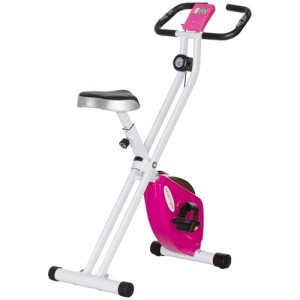The Ultimate Guide to Bike Exercise Cycles: Benefits, Types, and FAQs
In the world of fitness, bike exercise cycles have gotten considerable popularity due to their benefit and effectiveness. With a vast array of models and functions available, they use an outstanding methods for people of all fitness levels to engage in cardiovascular exercise from the comfort of their own homes. This article will look into the various elements of bike exercise cycles, including their benefits, the types offered on the market, and answers to some frequently asked questions.
Advantages of Bike Exercise Cycles
Whether one aims to slim down, build endurance, or merely enhance overall fitness, bike exercise cycles supply numerous advantages:
- Convenience: Exercising in your home removes the need for travelling to a gym, conserving both time and money. Users can exercise whenever it suits their schedule, making it easier to stay consistent with their workout regimens.
- Low Impact: Unlike running or high-impact aerobics, cycling is a low-impact exercise. This characteristic makes it ideal for people with joint problems or those recovering from injuries, as it reduces stress on the knees, ankles, and hips.
- Calorie Burn: Engaging in cycling can burn a substantial variety of calories, depending on the intensity and duration of the workout. Usually, a person can burn anywhere from 300 to 600 calories per hour of moderate to vigorous cycling exercise.
- Cardiovascular Health: Regular cycling strengthens the heart, lungs, and blood circulation system, promoting a healthier cardiovascular system. In time, constant use can cause improved heart rate and blood pressure levels.
- Muscle Toning: Cycling mainly works the lower body muscles, consisting of the glutes, quadriceps, hamstrings, and calves. Routine usage can cause improved muscle tone and strength.
- Mental Health: Exercise is understood to release endorphins, which assist elevate state of mind and lower stress. Routine cycling can result in enhanced mental well-being and decreased feelings of stress and anxiety and depression.
- Customizable Workouts: Most bike exercise cycles come geared up with adjustable resistance levels; users can tailor their exercises to fit their private fitness levels and goals.
Kinds Of Bike Exercise Cycles
When it pertains to bike exercise cycles, various types cater to different workout styles and choices. Some popular types include:
1. Upright Bikes
- These resemble traditional bicycles and require users to sit upright while pedaling. They engage the core and lower body successfully.
2. Recumbent Bikes
- Recumbent bikes have a larger seat with back support, enabling users to being in a reclined position. These bikes are ideal for those with back problems or mobility problems.
3. Spin Bikes
- Constructed for high-intensity workouts, spin bikes simulate the feel of outdoor cycling. They typically include a flywheel for a smooth ride and adjustable resistance, making them ideal for indoor cycling classes.
4. Spin Bikes
- Built for high-intensity workouts, spin bikes imitate the feel of outside cycling. They often include a flywheel for a smooth ride and adjustable resistance, making them ideal for indoor cycling classes.
5. Air Bikes
- These bikes utilize an air resistance mechanism, suggesting the intensity increases as you pedal harder. Air bikes supply a full-body workout, engaging both the upper and lower body.
6. Folding Bikes
- Ideal for those with minimal space, folding bikes can be easily stored away when not in usage. Fitness Bicycle retain a compact yet practical style, integrating adaptability and convenience.
7. Smart Bikes
- Equipped with technology, these bikes can link to fitness apps and supply interactive exercises. They track user metrics, making exercise more engaging and tailored.
Key Features to Consider
When choosing a bike exercise cycle, it's vital to consider the following functions:
- Adjustable Resistance: Look for bikes with a series of resistance levels to permit progressive workouts.
- Convenience: Ensure the bike has an adjustable seat and handlebars for a comfortable fit.
- Integrated Programs: Some bikes come with pre-set workout programs to provide variety and structure to workout sessions.
- Display Monitor: A good display needs to provide important metrics, such as time, range, speed, and calories burned.
- Weight Capacity: Make sure the bike can accommodate the user's weight to make sure safety and resilience.
Frequently Asked Questions About Bike Exercise Cycles
1. How typically should I utilize my bike exercise cycle?
It is recommended to utilize your bike a minimum of 3 to 5 times each week for optimal results, going for 30 minutes to an hour each session.
2. Can I reduce weight using a bike exercise cycle?
Yes, cycling is a reliable way to burn calories and can contribute considerably to weight loss when integrated with a well balanced diet plan.
3. Are bike exercise cycles suitable for beginners?
Definitely! Many exercise bikes are designed for users of all fitness levels. Newbies might begin with low resistance and slowly increase intensity as their fitness enhances.
4. How should I preserve my exercise bike?
Routine maintenance consists of keeping the bike tidy, looking for loose parts, and ensuring that moving parts are oiled for smooth operation.
5. Can I see TV or listen to music while utilizing the bike?
Yes! Many discover that watching television or listening to music makes the exercise more satisfying and helps pass the time throughout workouts.
Buying a bike exercise cycle can be a transformative decision for anyone aiming to enhance their fitness regimen. With their convenience, low impact, and broad variety of benefits, stationary bicycle are an outstanding alternative for novices and skilled athletes alike. Comprehending the types, functions, and maintenance requirements can take full advantage of the effectiveness of this flexible fitness equipment, causing improved health, fitness, and general well-being. Whether one desires to lose weight, build endurance, or maintain physical conditioning, a bike exercise cycle might be the secret to achieving those objectives.

